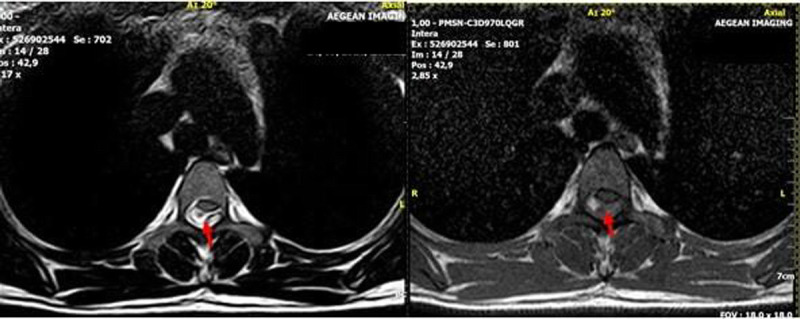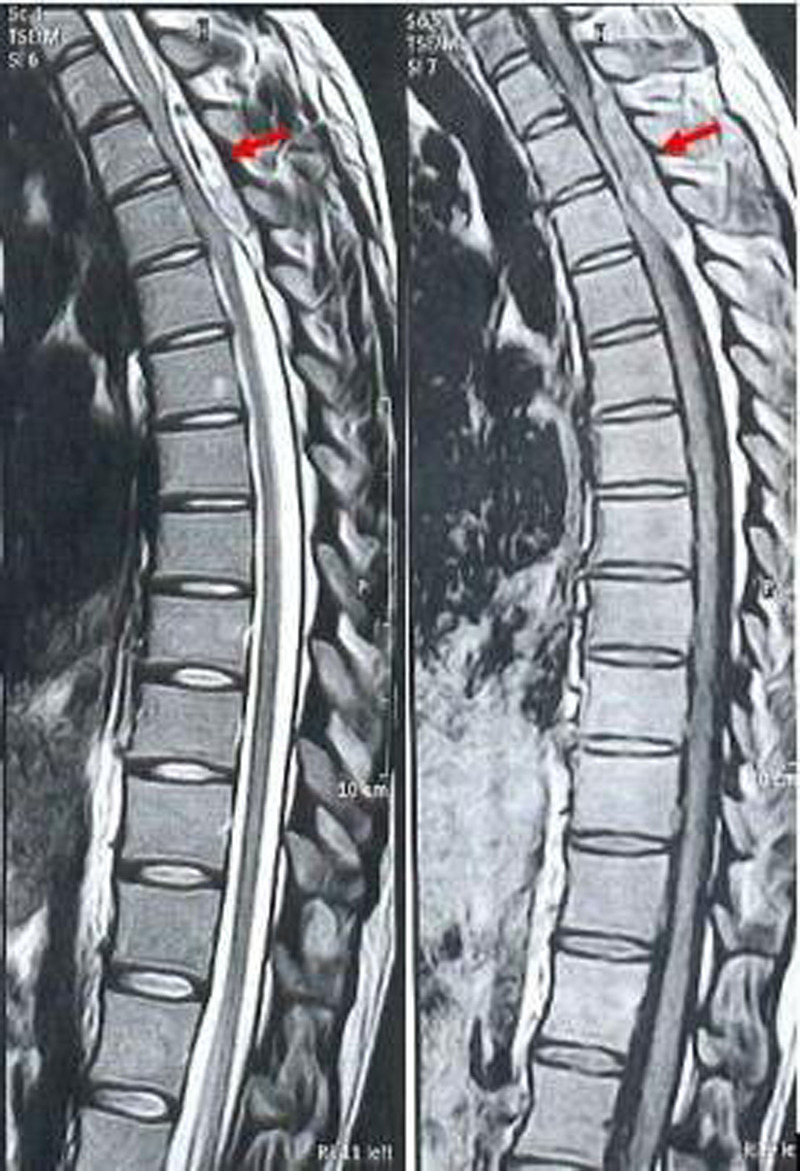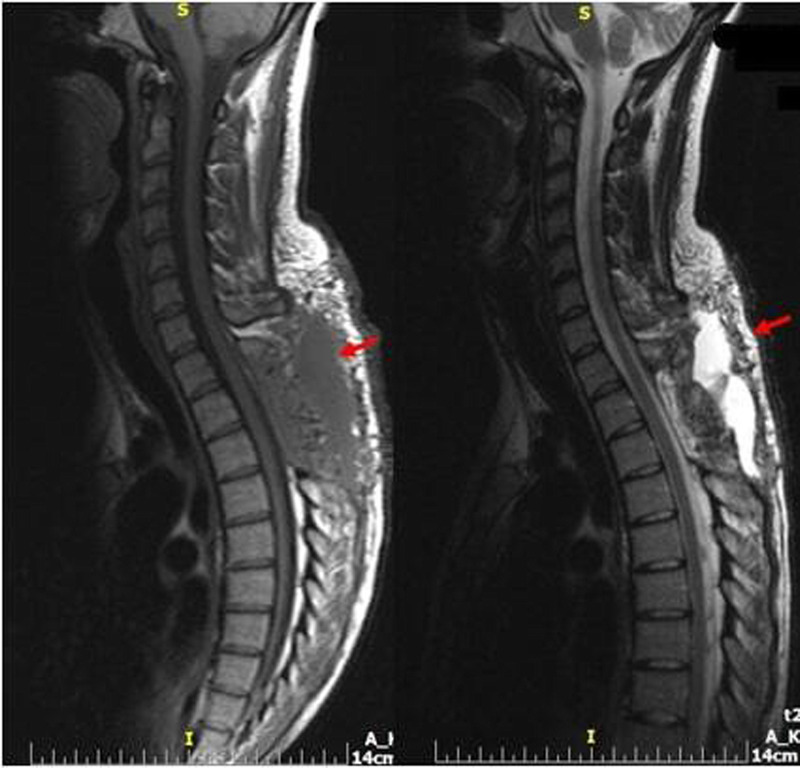Spontaneous Thoracic Spinal Epidural Hematoma During Pregnancy.
IF 1.7
Maternal-fetal medicine (Wolters Kluwer Health, Inc.)
Pub Date : 2022-09-26
eCollection Date: 2023-01-01
DOI:10.1097/FM9.0000000000000165
引用次数: 0



妊娠期自发性胸椎硬膜外血肿
自发性脊髓硬膜外血肿(SSEH)是罕见的,特别是在怀孕期间。然而,SSEH是一种严重的紧急情况,必须立即处理,以防止母亲的永久性神经缺陷和死产。SEEH的病因和发病机制尚不清楚,尽管文献中描述了多种理论和诱发因素。在这个报告中,我们描述了一个怀孕的女性谁发展SSEH的情况。患者提供书面和知情同意发表她的临床信息和相关图像。在这里,我们报告了一例24岁的女性,孕龄31周,已知因子S缺乏和狼疮抗凝剂阳性,正在接受低分子肝素(LMWH)治疗。这种治疗有可能导致出血。此外,患者报告有10天的背部、乳房和下肢麻木和疼痛史。无外伤史报道。患者表现为急性(12小时)截瘫,立即在当地医院进行了磁共振成像(MRI)扫描,发现T1-T3位背侧硬膜外间隙急性出血(图1,2)。给予皮质类固醇,并通过直升机将患者转移到我们的急诊科,神经学评估显示双下肢力量受损(右:3/5,左:1/5),以及轻触丧失。心脏摄影和腹部超声显示心动过缓,脉搏中位数约为每分钟98次
本文章由计算机程序翻译,如有差异,请以英文原文为准。
求助全文
约1分钟内获得全文
求助全文

 求助内容:
求助内容: 应助结果提醒方式:
应助结果提醒方式:


